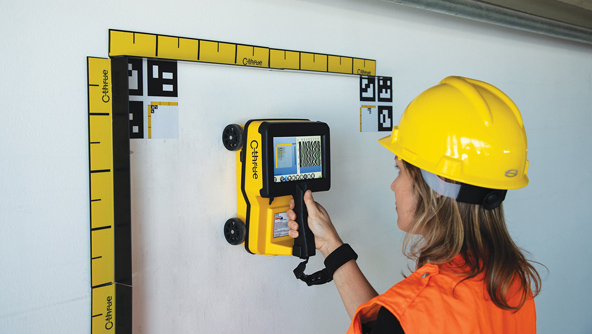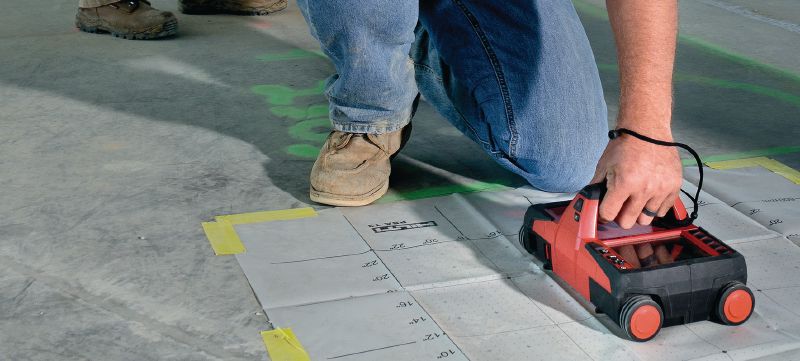Unveil the Transformative Power of Concrete Scanning in Making The Most Of Performance and Security
Concrete scanning has emerged as an essential tool in the building and construction sector, offering unrivaled advantages in improving task performance and making certain security standards. The transformative power of concrete scanning exists in its ability to provide thorough understandings and real-time information, changing how tasks are planned and performed.
Value of Concrete Scanning
Guaranteeing the structural integrity and safety of building and construction jobs starts with the crucial action of carrying out extensive concrete scanning. Concrete scanning is a non-destructive method utilized to find and map subsurface aspects within concrete structures. This procedure is crucial in determining prospective risks, such as rebar, post-tension cable televisions, and conduits, that might be hidden within the concrete. By utilizing innovative technologies like ground-penetrating radar (GPR) and electromagnetic induction, construction teams can properly find these elements without triggering any type of damage to the framework.
Furthermore, concrete scanning assists in enhancing job timelines and spending plan by staying clear of unanticipated prices and hold-ups that may occur due to unanticipated blockages within the concrete. Eventually, investing in thorough concrete scanning is a positive strategy that boosts both effectiveness and security in building jobs.
Exactly How Concrete Scanning Works
Concrete scanning operates as a vital device in building tasks by using innovative innovations to discover and map subsurface aspects without creating architectural damage. Ground Permeating Radar (GPR) and Electromagnetic Induction (EMI) are two key approaches utilized in concrete scanning. GPR works by sending out high-frequency radar pulses right into the surface, which get better when they run into subsurface things or spaces. The time considered the signal to return suggests the deepness and place of the items. EMI, on the various other hand, utilizes electromagnetic fields to determine variations in material make-ups, such as determining rebar or avenues within concrete frameworks.
Throughout the scanning procedure, the information gathered is assessed in real-time, permitting immediate identification of prospective threats or barriers underneath the surface area. By using these advanced modern technologies, concrete scanning substantially decreases the risk of costly damages and injuries on building and construction sites.
Benefits of Concrete Scanning
One of the primary advantages of concrete scanning is the ability to detect and situate embedded things such as rebar, post-tension cable televisions, and conduits properly. Concrete scanning assists in planning and creating much more effectively, as it supplies precise details regarding the location and depth of architectural elements.

Situation Studies: Concrete Scanning Success

In another instance, a building and construction company utilized 3D concrete scanning to examine the condition old concrete frameworks in a historic structure. The comprehensive scans given important understandings right into the level of wear and tear and helped focus on upkeep efforts successfully. By proactively addressing locations of problem identified with scanning, the firm had the ability to extend the life expectancy of the structure and ensure resident security.
These study underscore the transformative power of concrete scanning in boosting performance, accuracy, and safety in building tasks.
Implementing Concrete Scanning in Projects
Executing sophisticated scanning modern technologies throughout construction projects has ended up being progressively essential for enhancing precision and safety. By incorporating concrete scanning into project planning and execution, construction teams can determine prospective dangers, such as rebar or post-tension wires, concealed within concrete frameworks. This aggressive approach lessens the threat of mishaps, delays, and pricey rework, ultimately bring about much more effective project timelines and budgets.
To execute concrete scanning efficiently, job managers must collaborate very closely with skilled scanning professionals to establish one of the most ideal scanning strategies for the details project needs. Engaging scanning professionals from the beginning of a task enables the group to produce detailed scanning strategies that attend to vital areas of concern and make certain complete information collection.
In addition, incorporating concrete scanning into routine job operations can simplify decision-making processes, as real-time check data provides instant insights right into the condition of concrete frameworks - Concrete Scanning. This data-driven strategy facilitates informed problem-solving and allows teams to make changes without delay, cultivating a society of effectiveness and safety throughout the project lifecycle

Final Thought
To conclude, concrete scanning plays a vital function in enhancing efficiency and safety and security in building tasks. By making use of advanced modern technology to map and detect out underlying frameworks within concrete, this process aids to stop Our site pricey mistakes, make certain architectural honesty, and reduce dangers on website. With the ability to discover concealed elements and give accurate data, concrete scanning shows to be an important device for maximizing project end results and maximizing overall success.
Concrete scanning is a non-destructive technique utilized to spot and map subsurface elements within concrete structures. In addition, concrete scanning aids in maximizing job timelines and spending plan by staying clear of unexpected expenses and hold-ups that might occur due to unexpected blockages within the concrete. One notable situation research study includes a large-scale restoration job where concrete scanning played a critical role in making certain task success.In another case, a building firm utilized 3D concrete scanning to examine the problem of maturing concrete frameworks in a historic building. By integrating concrete scanning into project preparation and implementation, construction teams can identify potential risks, such as rebar or post-tension cable televisions, hidden within concrete frameworks.